right to vote
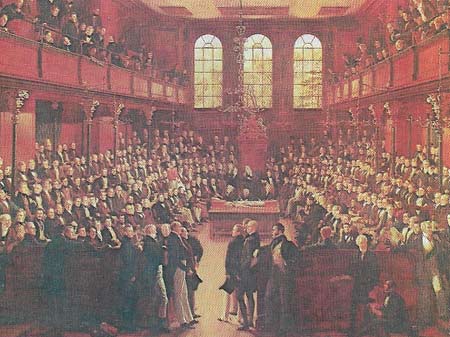
Figure 1.The post-1832 "reformed" Parliament had members from the previously unrepresented manufacturing towns at the expense of the small "rotten" boroughs and some "pocket" boroughs.
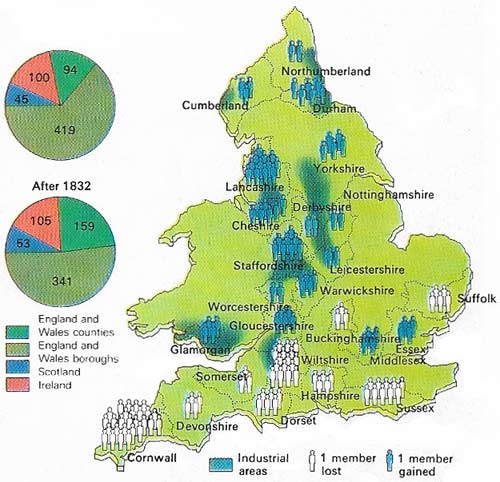
Figure 2. The First Reform Bill was essentially a conservative measure. It rectified the anomalies created by the population changes in the previous hundred years and enfranchised the upper middle classes.
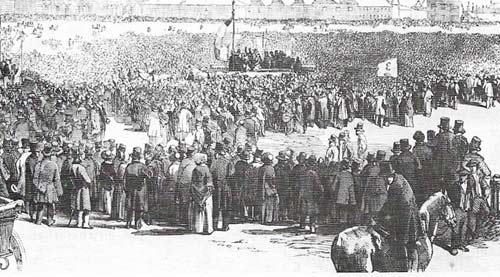
Figure 3. The Chartists, here shown at their last great meeting in 1848 demanded sweeping electoral reforms; but the movement died because of dissension and poor leadership.
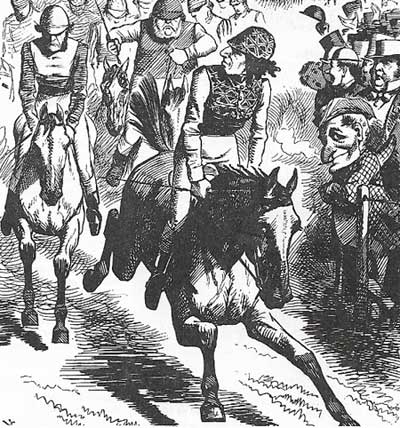
Figure 4. Disraeli leads "the race for electoral reform" in this Punch cartoon. The second Reform Bill was passed in 1867 by Conservatives under Derby and Disraeli.
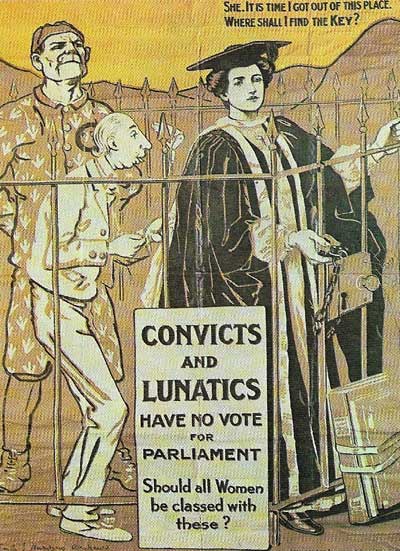
Figur e5. The question of votes for women became a prominent issue in the 10 years prior to 1914 when women's groups were formed to campaign for the "suffrage". This was not fully achieved, for women over 21, until 1928.
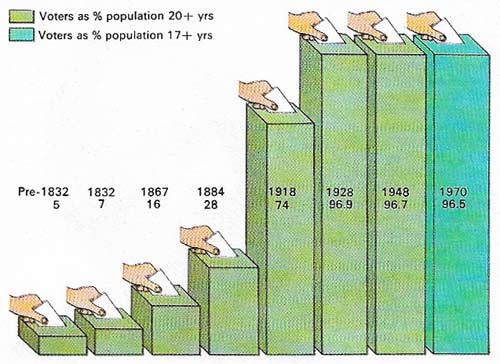
Figure 6. The electorate only gradually increased with the passing of the Reform Acts of 1832, 1867, and 1884. Growing economic prosperity brought many within the franchise qualifications without the need of legislation. In 1918, men over 21 and all women over 30 years old were granted the vote. In 1928 all women over 21 were given the vote. In 1948 the last remnant of plural voting was abolished and, as a result, the number of the electorate fell to some extent.
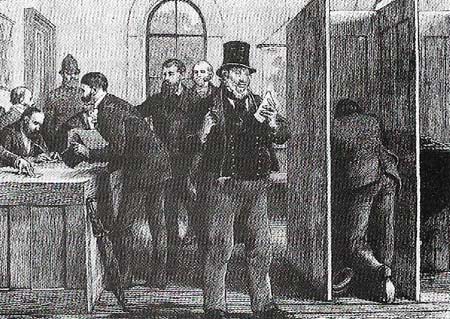
Figure 7. The introduction of secret voting (1872) was one of several reforms that had removed the worst abuses from the electoral system by the end of the 1800s. But women - half the population - still did not have the vote. After 1884, more than half the adult males were eligible to vote: the redistribution of seats had corrected the worst imbalances produced by the growth of the industrial towns that occurred during the Industrial Revolution. One result of these and other reforms, such as the abolition of a property qualification for MPs (1858), was the rise of the Labour Party.
The early 19th-century parliamentary system in Britain contained many anomalies. The right to vote was governed by a complex system of traditional rights and privileges that had hardly changed since the mid-17th century. Many boroughs elected their MPs on a tiny franchise; some had become so reduced that they were known as "rotten" boroughs and election to the seat lay almost entirely within the power of the local landowner. Moreover, the dramatic growth and redistribution in population during the Industrial Revolution created an anomalous situation where large, thriving towns had no representation whatsoever in Parliament.
Twin aspects of reform
Parliamentary reform, therefore, had two major aspects; the progressive extension of the franchise, to encompass all men, and later women; and the redistribution of seats to rectify the anomalies of the "unreformed" House of Commons. In addition, the conduct of elections, the use of bribery, and the decisive power of individual patrons in the many "pocket" boroughs all formed part of the long-standing unreformed system.
Movements for reform began in the second half of the 1700s, when the radical demagogue John Wilkes (1727–1797) whipped up much popular support in London in the 1760s and 1770s. Fear of disorder, following the French Revolution, and the vested interests of many existing MPs, held back reform for another generation. But reform and "radical" ideas were kept alive by men such as Henry Hunt (1773–1835), William Cobbett (1763–1835), John Cartwright (1740–1824), and Francis Place (1771–1854).
The growth of the manufacturing towns during the Napoleonic Wars created a demand for representation, seen in the formation of political unions in towns such as Birmingham and Manchester. Discontent with the Tory administrations brought the Whigs to power in 1830.
A bill was introduced in 1831 but was rejected by the House of Lords. This caused widespread unrest, including riots at Derby, Nottingham and Bristol. Under threat of the creation of new peers, the Reform Bill was passed in 1832. The First Reform Act replaced the existing confusion of voting qualifications with a more regular system. But the electorate rose to only 652,000 and power remained vested in the hands of the upper and middle classes. More significant was the redistribution of 143 seats from the worst of the insignificant rotten boroughs to the larger manufacturing towns, London, and the counties (Figures 1 and 2).
The 1832 Reform Act was in many ways conservative. Even many Whigs regarded it only as a measure to cure the anomalies of the existing electoral system. Attempts by the Chartists to coerce Parliament into a further program of radical reform was resisted by the propertied classes. Three mass petitions in 1839, 1842, and 1848 (Fig 3) in support of the Charter were ignored.
The vote for the working man
Growing prosperity brought more people within the 1832 franchise qualifications by the 1860s. With the increasing inevitability of a further measure of reform, the Conservative leaders, Lord Derby (1799–1869) and Benjamin Disraeli (1804–1881), and the Liberal leader, William Gladstone (1809–1898), juggled with the new proposals to win advantage for their parties. It was Disraeli who finally managed to keep his party together and who is credited with the Second Reform Act in 1867 (Figure 4). This act extended the vote to about one million urban working men, a further redistribution of seats.
The Ballot Act of 1872 introduced secret ballot, and in 1883 the worst aspects of electoral corruption were made illegal. In 1884 the Third Reform Act was passed by the Liberals, which enfranchised agricultural laborers and increased the electorate from about three million to about five million. In the following year, another redistribution of seats removed the last proprietary boroughs. Finally, in 1918 all men over the age of 21 received the vote (Figure 6).
The suffragette movement
Women had been excluded from the vote in all the reform acts up to 1918. They still had very insecure property rights and were widely regarded as unfit to exercise the responsibilities of political power (Figure 5). The Women's Social and Political Union was founded in Manchester in 1903 to fight for the vote, headed by Mrs Emmeline Parkhurst (1858–1928). Known as "suffragettes", they gradually gave up normal methods of demonstrations and propaganda and turned to violence, breaking windows, setting building on fire, chaining themselves to railings, and resisting arrest.
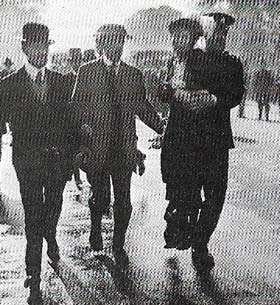 |
| Emmeline Pankhurst, leader of the suffragettes, is carried away by the police during a demonstration. After 1905, the suffragettes pursued a militant policy, which led to a number of arrests and imprisonments. |
With the defeat of a moderate proposal for female suffrage in 1912, the campaign for women's rights was temporarily frustrated. World War I, however, advanced the status of women. They played an immense part in the war effort, working in munitions factories and previously male-dominated jobs. In 1918 women over 30 were given the vote; and this franchise was extended to all women over 21 in 1928.
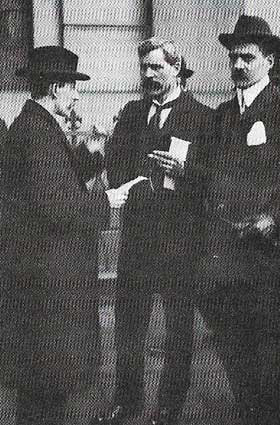 |
| Ramsey Macdonald (1866–1937) (center) formed the first Labour government in January 1924. The Labour Party achieved an electoral breakthrough in the 1906 general election, when they formed a pact with the Liberals. Labour's 30 seats at that election were a recognition of the growing power of a party that represented the interests of the newly enfranchised working classes. |
Plural voting, through property or businesses in more than one constituency, was abolished in 1906; it finally disappeared in 1948 with the removal of university seats at Oxford and Cambridge.
